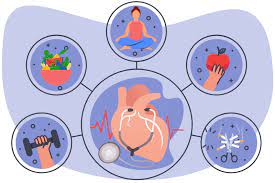Beyond the Bite: 10 Benefits of Taking a Walk After You Eat
By: Saika J
In the quest for better health, sometimes the simplest habits can have the most profound impact. One such habit is taking a brief, 10-minute walk after each meal. Known as post-prandial walking, this practice offers a host of health benefits supported by science. Let’s dive deeper into how this easy, time-efficient activity can significantly enhance your well-being.
01. Enhanced Gastrointestinal Motility
The Science Behind It Post-prandial walks stimulate peristalsis, the wave-like contractions of the digestive tract that help move food through the system. This enhanced motility can reduce symptoms of bloating, constipation, and indigestion.
Practical Benefits By aiding digestion, these short walks can help you feel more comfortable after meals, minimizing the likelihood of discomfort that can arise from slower digestion. Over time, improved gastrointestinal function can also lead to better nutrient absorption.
02. Improved Glycemic Control
How It Works Physical activity immediately following a meal activates skeletal muscles, which enhances glucose uptake from the bloodstream. This process helps in regulating blood sugar levels more effectively.
Target Audience This benefit is particularly crucial for individuals with diabetes or prediabetes, as it can help manage post-meal blood sugar spikes. For others, it contributes to overall metabolic health, potentially lowering the risk of developing diabetes.
03. Weight Management Support
Caloric Expenditure While a 10-minute walk may seem trivial, it contributes to caloric burn. When combined with other healthy lifestyle choices, these walks can support weight management goals.
Appetite Control Improved digestion and regulated blood sugar levels can also enhance feelings of satiety, reducing the likelihood of overeating at subsequent meals.
04. Cardiovascular Health Benefits
Heart Health Walking, even in short bursts, is a cornerstone of cardiovascular fitness. Regular post-meal walks help improve cardiovascular function, which can reduce the risk of heart disease.
Long-Term Impact Consistent walking strengthens the heart, lowers bad cholesterol levels, and improves circulation. These changes collectively reduce the risk of heart attacks and strokes, leading to a longer, healthier life.
05. Blood Pressure Regulation
Immediate Effects Walking has been shown to have a favorable impact on blood pressure levels. This immediate reduction in blood pressure post-meal helps alleviate the workload on the heart and circulatory system.
Chronic Benefits Regular post-prandial walking can contribute to sustained blood pressure control, which is crucial for preventing hypertension and its associated complications.
06. Enhanced Mood and Cognitive Function
Psychological Benefits Physical activity is a well-established mood enhancer. Walking after meals can help elevate mood, reduce feelings of anxiety, and combat the afternoon slump.
Cognitive Boost Regular walking increases blood flow to the brain, which can enhance cognitive function and overall mental clarity. This can be particularly beneficial for staying focused and productive throughout the day.
07. Stress Reduction
Mindful Movement Walking serves as a form of active meditation, allowing for a mindful break from daily stresses. This practice can promote relaxation and mental clarity.
Long-Term Stress Management Incorporating regular walks into your routine can help build resilience to stress, leading to improved mental health over time.
08. Strengthened Immune System
Immune Boost Regular physical activity, including walking, has been shown to bolster the immune system. This can help reduce susceptibility to infections and illnesses.
Ongoing Health Benefits A strong immune system not only helps you stay healthy but also contributes to faster recovery if you do get sick, maintaining your overall well-being.
09. Improved Bone Health
Bone Density Walking is a weight-bearing exercise, essential for maintaining bone mineral density. This is crucial for preventing osteoporosis, especially as we age.
Prevention of Bone Loss Consistent walking can slow down bone density loss, reducing the risk of fractures and promoting long-term skeletal health.
10. Enhanced Musculoskeletal Health
Muscle Strength Walking strengthens leg muscles, which is vital for maintaining mobility and physical performance.
Joint Health Regular walking improves joint mobility and flexibility, reducing the risk of stiffness and pain. This can enhance your ability to perform daily activities independently.
Integrating Post-Prandial Walks Into Your Routine
Consistency is Key To reap the full benefits, aim to incorporate a 10-minute walk after most, if not all, meals. Consistency will help you experience the cumulative positive effects on your health.
Making it a Habit Start by setting reminders on your phone or establishing a routine where walking becomes a natural part of your day. Consider inviting friends or family to join you, making it a social activity.
Overcoming Barriers If weather or other constraints make walking outside difficult, consider walking indoors, perhaps around your home or workplace. The key is to keep moving.
Bottom-Line: A Simple Step Towards Better Health
Incorporating a 10-minute walk after meals is a simple yet powerful way to enhance your overall health. From improved digestion and blood sugar control to better cardiovascular and mental health, the benefits are extensive and scientifically backed.
Call to Action Start today. Embrace the habit of post-prandial walking and experience the transformation in your physical and mental well-being. Remember, small steps can lead to significant changes.






